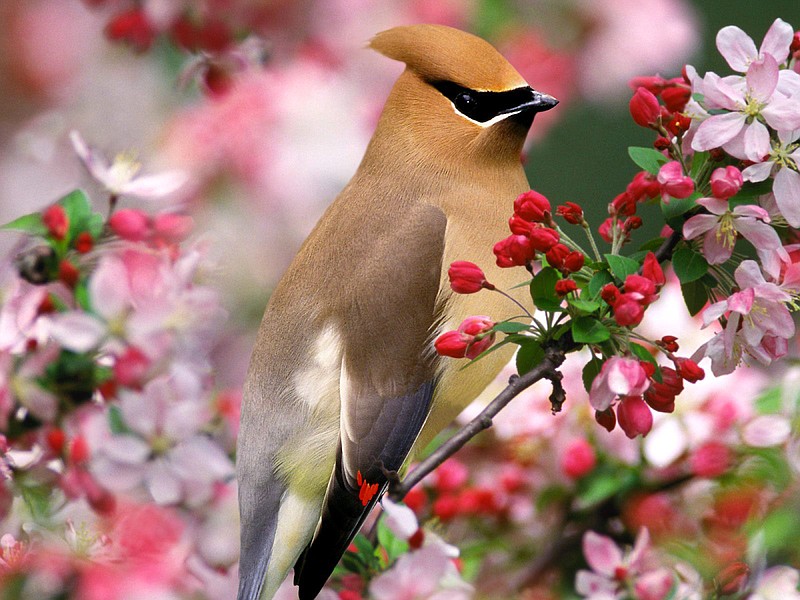Spring is the most dynamic time for Tennessee wildlife. Black bears awake from their deep sleeps; songbirds return from their wintering grounds. And our backyards begin to bloom anew.
In fact, what grows in your garden could determine what songbirds you see throughout the seasons. Want to attract more birds year-round? Here are a few ideas on what to plant.
TO ATTRACT SPRING BIRDS
What to plant: Crabapple tree
Why birds love it: Species such as cedar waxings, finches, mockingbirds and grosbeaks like to feed on the tree's flower buds - which can provide an important source for energy for those returning from a long flight.
Why we love it: Drought-resistant and easy to care for, these ornamental trees boast blossoms that are both fragrant and colorful, ranging from white to deep red depending on the variety. In the summer, the fruit borne may be collected and used to make jam.
TO ATTRACT SUMMER BIRDS
What to plant: Trumpet vine
Why birds love it: Specifically, the ruby-throated hummingbird loves these orange-and-red blooms for the nectar, and the vine's tube-shaped flowers are perfect for the hummingbird's needle-like bill.
Why we love it: Also called the trumpet creeper, this vine is fast-growing and robust, meaning it is more likely to survive the winter to return in the spring.
TO ATTRACT AUTUMN BIRDS
What to plant: Purple coneflower
Why birds love it: Species such as blue jays, cardinals and goldfinches love to eat the seeds located in the flower's cone-shaped center.
Why we love it: Not only is this perennial easy on the eyes, with its large blossoms ranging in color from pink to purple, but it is also hardy. According to the Old Farmer's Almanac, coneflowers also help repel deer.
Pro tip: To optimize this plant's feed-potential, wait until spring to cut back any dead flowers.
TO ATTRACT WINTER BIRDS
What to plant: Arrowwood Viburnum
Why birds love it: Species such as robins, cardinals, cedar waxwings, finches and thrushes flock to these bushes beginning in the late fall for their blue-black berries.
Why we love it: With its creamy white spring flowers and vibrant red fall foliage, this easy-to-grow shrub enhances a garden year-round.
